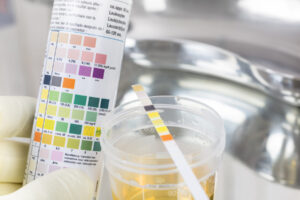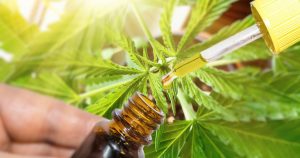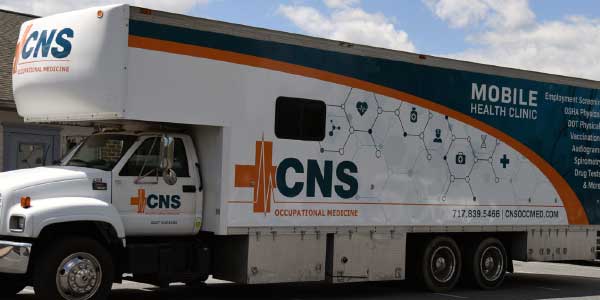Overdose Deaths: Which Industry Is Most Affected?
When compared to all industries, construction workers are more likely to die of overdose than workers in any other occupation. Construction workers already had the
We offer consulting services for a number of services including DOT and Non-DOT Drug Testing. Also, you can take advantage of our online training courses at CNS Learning Hub to train your employees.
We offer consulting services for a number of OSHA services from Respiratory Fit Testing to Noise Surveys and Noise Abatement to best practices to protect your employees from Silica Dust. Also, you can take advantage of our online training courses at CNS Learning Hub to train your employees.
Compliance Navigation Specialists (CNS) is specifically focused on trucking companies and keeping them DOT Compliant. The DOT Compliance Programs make things simple for motor carriers.
We offer consulting services for a number of services including DOT and Non-DOT Drug Testing. Also, you can take advantage of our online training courses at CNS Learning Hub to train your employees.
We offer consulting services for a number of OSHA services from Respiratory Fit Testing to Noise Surveys and Noise Abatement to best practices to protect your employees from Silica Dust. Also, you can take advantage of our online training courses at CNS Learning Hub to train your employees.
Compliance Navigation Specialists (CNS) is specifically focused on trucking companies and keeping them DOT Compliant. The DOT Compliance Programs make things simple for motor carriers.
CNS Companies is a network of companies specializing in services related to the transportation, manufacturing, construction, service, education and medical industries. Each division offers specific services, all related to DOT- and OSHA-regulated companies.
When compared to all industries, construction workers are more likely to die of overdose than workers in any other occupation. Construction workers already had the
We offer consulting services for a number of services including DOT and Non-DOT Drug Testing. Also, you can take advantage of our online training courses at CNS Learning Hub to train your employees.
We offer consulting services for a number of OSHA services from Respiratory Fit Testing to Noise Surveys and Noise Abatement to best practices to protect your employees from Silica Dust. Also, you can take advantage of our online training courses at CNS Learning Hub to train your employees.
Compliance Navigation Specialists (CNS) is specifically focused on trucking companies and keeping them DOT Compliant. The DOT Compliance Programs make things simple for motor carriers.
We offer consulting services for a number of services including DOT and Non-DOT Drug Testing. Also, you can take advantage of our online training courses at CNS Learning Hub to train your employees.
We offer consulting services for a number of OSHA services from Respiratory Fit Testing to Noise Surveys and Noise Abatement to best practices to protect your employees from Silica Dust. Also, you can take advantage of our online training courses at CNS Learning Hub to train your employees.
Compliance Navigation Specialists (CNS) is specifically focused on trucking companies and keeping them DOT Compliant. The DOT Compliance Programs make things simple for motor carriers.
CNS Companies is a network of companies specializing in services related to the transportation, manufacturing, construction, service, education and medical industries. Each division offers specific services, all related to DOT- and OSHA-regulated companies.
When compared to all industries, construction workers are more likely to die of overdose than workers in any other occupation. Construction workers already had the
Our Occupational Medicine Team can develop a custom workplace safety plan for your company. But there are so many things to consider. That’s why we are here.
The purpose of this guide is to help you understand:
The best way to do this is to break it up into 5 main segments:
To prevent drug and alcohol abuse affecting the workplace by employees on and off the job, employers need to utilize some form of drug and alcohol testing for employees and job applicants, especially in safety sensitive positions.
But what questions should you be asking and where do you begin? Let’s consider three questions.
It is now common knowledge that employee heavy alcohol, illicit drugs, or substance abuse are associated with negative work behaviors such as absenteeism and frequent job changes.
While every industry needs to focus on employee and workplace safety, some industries are affected by substance abuse more than others.
According to SAMHSA research data, there are eleven industries that sees more than 10% of adults aged 18 to 64 employed full time are affected by substance use disorder.
These industries are: Hotel and Food Services; Construction; Arts and Entertainment; Mining; Utilities; Management; Retail; Agricultural, Forestry and Fishing/Hunting; and Wholesale Trade.
Let’s look at this a bit closer.
Accommodation (hotel) & Food service industry includes all those who work in companies that provide lodging and/or prepare meals, snacks and beverages for immediate consumption. “Hazardous drinking patterns” were identified in as many as 80% of male restaurant workers and 64% of females in the restaurant industry, according to a study published in the American Journal of Drug and Alcohol Abuse.
Construction includes those companies engaged in building or engineering projects, such as highways and homes. It also includes employees involved in preparing construction sites for new construction and subdivision of property for future development, as well as contractors and subcontractors. Construction workers have the 2nd highest incidence of past-month heavy alcohol use at 16.5%.
Mining includes those who work in obtaining oil, coal, solid and liquid minerals, and gases from the earth through the use of wells, tunnels, digging or drilling into the ground and more. Mining industry workers have the highest incidence of past-month heavy alcohol use at a staggering 17.5%.
The Utilities sector is made up of companies that provide electric and natural gas services, steam and water services, as well as sewage removal. 11.5% rate of substance abuse.
Health Care Professionals see 10 and 15% abuse at one point or another during their career.
Given the lifetime health and economic burdens from alcohol use, illicit drug, and substance use disorders, SAMHSA’s report illustrates the need to monitor industries individually.
What laws are regulating or requiring drug testing?
Since the 1980’s, drug testing for pre-employment is widely accepted in the United States.
Employers have the right to learn about the candidates and ensure that a potential new hire does not have any troubling history that could potentially harm the business or your employees.
In fact, many employees are federally mandated to be drug or alcohol tested. Employees held under the following agencies are required to be tested: 25% of which to be drug tested and 10% alcohol tested each calendar year:
However, there are also states laws that make random drug testing an invasion of privacy under tort principles or limit random drug testing for a person who works in a “safety-sensitive” position.
Company DERs or HR managers must ensure that drug and alcohol testing policy conditions comply with appropriate federal, state, and local laws or face monetary and statutory penalties.
What is your goal for drug and alcohol testing?
Health of your employees is extremely important, but so is protecting the company’s bottom line.
For example, employees who are abusing drugs or alcohol in the workplace could damage the company’s reputation or poor performance could decrease employee morale and profitability.
Most workplace drug and alcohol policies focus on three goals to protect employees and the company:
To prevent drug and alcohol abuse in the workplace, companies have five ways to test employees. These are:
While a simple testing policy solely focuses on pre-employment testing, employers can create a balanced testing policy designed around your clearly specified goals. For example:
Another goal every company should focus on is positive communication around your policy. This will help establish or encourage a positive culture around drug testing.
If your employees understand the purpose of the policy and can see that it has clear and unthreatening objectives, they will feel more comfortable with what they may otherwise see as an invasion of privacy or punishment.
To be considered well written, the drug and alcohol policy should be fair, clearly stated, fully explained, and understood across the company, and compliant with local, state, and federal law in the areas the company has employees.
Failure to do so may lead to monetary damages and statutory penalties.
What to consider in a company drug testing policy
Urine has been the “gold standard” as the most common method for drug testing across the industry, even as oral (saliva) and hair testing techniques have improved reliability over the last few decades.
Unfortunately, there are many who are misguided on the strategy of when to use each drug testing method as there are pros and cons to each method and the reasons for testing.
The problem is companies are considering dropping urine for oral or hair testing for every type of reason an employee would be tested. This is misguided.
To help make choices on which method of testing is best for your company and reason for testing, we need to break down and compare urine, hair, and oral saliva testing into:
| Urine Testing | Oral (Saliva) Testing | Hair Testing | |
| Regulated | HHS + DOT | Pending HHS + DOT | Pending HHS + DOT |
| Detection Window | 2 – 7 days | 8 – 48 hours, short detection window | 7 – 90 days, long detection window |
| Collection Time | 10+ min depending on if donor did not provide enough sample | 15 minutes, non-invasive | 5 minutes, less invasive |
| Turnaround Time | 24-48 hours | 24-72 hours | 24-72 hours |
| Ideal Reason for Testing | Suitable for all testing reasons | Reasonable Suspicion & post-accident testing program | Post-accident, reasonable suspicion, pre-employment, and random testing program |
Now that we understand the pros and cons to each method of drug testing, let us dive into which method is most effective for the reasons a company would drug test.
Urine testing: As the most common testing method, urine testing can detect recent use, between one to three days and is suitable for all testing reasons and types of drugs being tested.
Oral saliva testing: Mouth swab testing is the least invasive method of testing and can detect recent drug use within the first few hours to 48 hours. This makes oral testing the best testing method for both reasonable suspicion and post-accident testing.
Hair testing: Using hair samples from the body is the only method of drug testing that can detect drugs and alcohol in the system from a week to 90+ days, unlike urine testing, which only detects drugs and alcohol up to 7 days. In recent statistics from Quest, hair testing provides nearly twice the number of positives drug tests than urine testing due to its longer detection time-frame and is the best option for a pre-employment or random testing program.
Each testing method can detect all the most popular drugs that your policy should cover. These drugs include:
Employers can create their own drug test panels to test individual drugs, but here are common panels to consider:
Non-DOT drug tests can include drug panels of up to 12-14 drugs, including other narcotics or synthetics, such as: K2, methaqualone, buprenorphine, tramadol, meperidine, cotinine (nicotine), and fentanyl.
When looking at updating your company drug testing policies, we believe a mix in methods is the most beneficial in your drug testing programs.
Again, it is important to note that there are various restrictive state drug testing regulations that may prevent companies from drug testing, who they can or cannot test and why.
Be Clear On Who Will Be Tested
Clearly stating when testing is needed may mean describing a threshold before testing occurs.
For example, you could require all employees to be tested during the pre-employment hiring process. Employers have the right to learn more about the candidates and to ensure a potential new hire does not have anything worrisome in their past that could potentially harm the business or employees.
If this is too broad of a testing policy, you could require pre-employment testing to only safety sensitive positions. Workplace safety is the principal concern for responsible companies. Substance abusers are about 3.5 times more likely to be involved in accidents on the job and 5 times more likely to hurt themselves at work, according to ACDE. A company should clearly state which positions are safety-sensitive in their drug testing policy.
Maybe you decide that pre-employment testing is not required, but you want to be able to hold accountable an employee that caused an accident on-site or just state that being high at work is not okay. Then your policy should specify that all employees are subject to a post-accident or reasonable suspicion testing if an accident occurs, or drugs were found at the workplace.
Be sure that who you decide should be tested aligns with your goals for drug and alcohol testing and then communicate this clearly to all employees and your reasons why these policies are in place.
How long do you want to wait for testing results?
When drugs enter the body, they get broken down and release the parent compound first and degrades into smaller metabolites later.
Oral testing is like blood testing because it tests for the “parent compound” of a drug, a better measure of recent drug use, while urine testing detects the smaller metabolites that take time to pass through our bodies. Therefore, urine testing can detect drug use from 2-7 days and oral testing from a few hours to 2 days. Hair testing is the only method that can detect drugs in the system from a week to 90+ days.
However, you may want immediate testing and can consider rapid testing, which provides results within a few minutes of the collection and is valuable for on-site or post-accident testing. If a rapid drug screen’s result is negative, you can have that information almost instantly.
But a rapid drug test cannot officially give a “positive” result, so a non-negative test result must be sent to the lab for further testing. Confirmed testing turnaround time ranges from 24 to 72 hours.
The other option is lab testing, which offers reliable results when performed at a certified laboratory that can provide hundreds of different drug panel configurations for your testing program. Turnaround times range from 24 to 72 hours.
Under Department of Transportation regulations, rapid urine testing is not permitted by the DOT, although available for your company’s non-DOT drug testing program collections.
No matter if your company is required to be a part of a federal or DOT drug testing program or you are focused on keeping your employees healthy and productive, there are three steps a drug testing specimen goes through.
These steps are:
Collection sites, like at our CNS office locations, is where an employee can give a drug test sample (whether by urine, oral saliva, or hair test), receive a medical exam, physical, or more. Once the donor provides a sample, it is quickly sent to a drug testing lab for testing.
Laboratories receive thousands of specimens each night from couriers and lab technicians, review all chain of custody forms to make sure each chain does not have missing information, and perform a Gas Chromatography – Mass Spectrometry (GCMS) test on samples with trace amounts of drugs during the initial screen.
If a positive test is affirmed, the results are sent to a Medical Review Officer (MRO). We will talk more about MROs in the next section.
Unfortunately, there are difficult decisions to make, especially around gray areas in drug testing. What should you consider and is a Medical Review Officer needed to help?
Drug testing policies can lack empathy and loss of good employees
The most overlooked area in a drug testing policy is what to do when there is a non-negative drug test result. A non-negative drug test includes the following results: positive, false-positive, false-negative, or negative.
For example, if an employee receives a positive drug test but claims it was likely a prescribed medication, a Medical Review Officer (MRO) or MRO-Assistant can contact the pharmacy or prescribing physician to verify the prescription and dosage and see if it is consistent with the levels found in the donor’s sample. If the prescription is validated, the MRO will report a negative result to the employer.
Employers who do not want to terminate their employee for a non-negative drug test must consider other options in their drug testing policy.
Theses options include:
Of course, if an employee has a repeat problem, then termination may be the best consequence to protect workplace safety.
Do you need a highly trained Medical Review Team or Medical Review Officer to help you remain compliant with all your drug and alcohol testing needs?
Basically, MROs act as independent and impartial gatekeeper for the accuracy and integrity of the drug testing process and determine if there is a legitimate medical explanation for laboratory confirmed positive, adulterated, substituted and invalid drug test results.
The MRO review process, which can take over a week to complete, includes three main steps:
If you are unsure whether you need a Medical Review Officer, here are three reasons you would need one. If you are still unsure, please call us.
If so, CNS Occupational Medicine has the solution for you. For more information, contact us at 800.551.9816 or info@cnsoccmed.com.
Be Clear on Consequences for Refusal to Test
No matter your company culture, some employees will try to delay drug testing or make excuses to not test. This is why your company needs a clear “Refusal to Test” definition and consequences.
The following are some examples that can be considered a “refusal to test”:
As we discussed previously, your company policy could immediately terminate an employee for refusing to test. But if you want to try and keep the employee, you could remove the employee from safety sensitive roles, go through an educational or counseling program, and ease them back into their original workplace roles.
Clear on procedures and consequences for False Positive, False Negative, Or Cheating
There are a lot of reasons why a drug test will not come back as simply a positive or negative result.
To protect falsely “blaming” the employee for a positive result, it is important to require certain employees, especially those in a safety-sensitive role, to provide an accurate history of all prescription, over the counter (OTC), and herbal drug use prior to the time of the sample collection.
Why? Because certain medications or remedies may result in false-positives due to cross-reactivity with other substances.
In other situations, you may receive a result of a false-negative where there could be a deliberate adulteration of the drug test sample. For example, the lab may find a low creatinine lab value due to the sample being diluted by consuming excessive water just prior to testing, or water was added to the urine sample, or even the sample being something like apple juice.
A company’s policy should clearly state the consequences of these types of cases, referring to termination or change of role and counseling program.
Okay, so now we get into the quickly changing acceptance or reaction to pandemic level abuse. Let’s take a look at marijuana, CBD products, and opioids (or painkillers).
How to approach medical and recreational marijuana legalization
For the last twenty years, scientific research has been trying to understand how marijuana affects the body, the mind, and its role in workplace safety.
First, to be clear, marijuana is still a schedule 1 drug federally. This means the drug has no accepted medical use in the United States and using schedule 1 drugs can put a person at a high risk for developing a substance use disorder.
All schedule 1 drugs are required to be included in federally regulated drug test panels, which includes other drugs like: ecstasy, heroin, and LSD.
While there were legal issues and little funding to produce ideal research studies, in 2017, a report from the National Academies of Sciences, Engineering, and Medicine rigorously analyzed more than 10,000 cannabis research studies since 1999 to identify if there was limited, moderate, or substantial statistical evidence of positive or negative health affects with the drug.
According to the report, cannabis has legitimate medicinal benefits for a variety of ailments, but also has been shown as:
Today, a new study published in the journal BMJ Open Respiratory Research found that using recreational marijuana is associated with a 22% increased risk of emergency room care and being hospitalized for any reason.
The research study looked at Canadian health records data for over 30,000 Ontario residents between the ages of 12 and 65 over a six-year period.
“Cannabis use is not as benign and safe as some might think. Our study demonstrates that the use of this substance is associated with serious negative outcomes, specifically, ED (emergency department) visits and hospitalizations,” the study author Nicholas Vozoris said in an email to CNN.
Beyond federal regulations, there have been a lot of changes from one state to another on medical and recreational marijuana use. As of 2023, recreational marijuana is legal in 21 states after voters passed measures in Maryland and Missouri.
The primary reason for prohibiting use of marijuana in the workplace is because early research points to a link between illicit drug use and workplace accidents due to short-term effects of impaired body movement, difficulty thinking, memory problems, and altered senses.
Until further research is conducted, employers should review all applicable medical and recreational marijuana laws carefully when setting up a drug testing. This means to clearly state when testing is required for the drug and the consequences of a positive test.
If your business is not federally regulated, you can set up a policy however you feel comfortable, such as:
Finally, be open with your employees by providing educational materials on how marijuana affects the body and the risks of impairment at work and update your managers on reasonable suspicion training.
How to address CBD products
In 2018, the definition of marijuana under the Controlled Substances Act removed hemp from the definition. If a hemp-derived product (such as CBD) has less than 0.3 percent tetrahydrocannabinol (THC), it is not a controlled substance.
The confusion is whether safety-sensitive employees such as truck drivers, bus drivers, transit vehicle operators or pilots can safely use CBD products while enrolled in a federal drug and alcohol testing program.
While CBD products that fall under the 0.3 percent THC threshold are legal for safety-sensitive employees to use, the FDA does not certify the THC levels these products contain, and many contain higher levels than the label indicates.
If a safety-sensitive employee were called for a random DOT drug test and happened to use one of these mis-advertised products, they could end up with a positive drug test result.
Since using a CBD or hemp product is not a “legitimate medical explanation” for a confirmed positive marijuana result, it would result in the employee being pulled from safety-sensitive functions until the return-to-duty process has been complete.
Companies need to safeguard themselves when it comes to positive drug tests resulting from CBD products with more THC than advertised. This can be done by warning employees of the company’s drug testing policies and the issues surrounding CBD products.
Below are some guidelines when adding CBD limitations in your company policies.
Review state laws
Employers can prohibit the use of marijuana on their premises, even if an employee is legally allowed to use it for medicinal purposes, and job applicants—as well as hired workers–who test positive for THC, can be denied employment, or fired if that is the workplace policy.
Remember, most CBD products are not regulated by the FDA and run the risk of containing more than the federally permissible amount of THC, even if sold in a state that does not permit the sale of marijuana products. So, there is a possibility that an employee could use what he or she believes to be a legally permissible, hemp-derived CBD product, but the unregulated product could trigger a positive test result for THC.
There are some state or jurisdiction exceptions, such as New Jersey, Oklahoma, and New York City.
Reviewing state and city rules is important as there is a possibility that an employee could use an unregulated legally permissible CBD product and trigger a positive test result for THC.
An employer may not know whether the positive result was triggered by CBD oil or marijuana use. In those types of situations, an employer may not definitively know whether the positive result was triggered by CBD oil or marijuana use.
Training managers on approaching CBD products in the workplace
Managers need to know what to do when an employee defends a positive drug test result due to them using a CBD product.
It is best practice for employers to refrain from acting until they have a conversation with the worker.
Regarding CBD use, there is not necessarily a one size fits all approach. An employer might even decide to make an exception to its drug policy if the person has a disability for which he or she uses CBD oil, particularly if he or she is not impaired on the job.
For companies regulated by the DOT, a Drug and Alcohol Supervisor Training is required, which covers how to deal with the use of and the suspected use of illegal drugs and alcohol.
Ideally, employees should let their workplace know about them using a CBD product for medical purposes by going to a doctor, getting a prescription, and sharing it with the employer. This will help prevent people trying to do the right thing from being penalized.
Additionally, employers should work with employment counsel and prepare to be flexible until more CBD rules are in place. This means your managers will need to know how to address situations where an employee defends a positive drug test result by using CBD.
If someone who is using CBD oil keeps their use of it private and tests positive for THC, it is best practice for employers to refrain from acting until they have a conversation with the worker. An employer might decide to make an exception to its drug policy if the person has a disability for which he or she uses CBD oil, particularly if he or she is not impaired on the job.
Ideally, employees should give their workplace a heads-up. It is best practice for an employee using CBD products to alert their employer so there are no unexpected consequences down the line. The simplest thing to do is go to a doctor, get a prescription, and make sure your employer is aware of it as we do not want people trying to do the right thing to get penalized.
Employees should also read CBD product labels carefully. However, it is still a very much ‘Buyer Beware’ CBD world, so consider cutting out CBD while job hunting until CBD products are better regulated.
What about DOT medical cards and non-CDL driver marijuana use
The federal DOT health history form can cause an automatic disqualification when it comes to marijuana history.
While marijuana has been decriminalized in 32 states, it remains illegal at the federal level. This means workers who are required to be tested under federal and state law (such as commercial motor vehicle drivers) can still be drug tested for marijuana.
However, this is leading to confusion about whether drivers operating CMVs without a commercial driver’s license can legally use marijuana in states where it is legal.
Non-CDL drivers that drive a commercial motor vehicle are often hotshot carriers driving an F-350, a part of the construction, waste, or landscape industries, or are local distribution drivers.
While these non-CDL drivers are not required to be in a drug testing program like their CDL counterparts, they still must pass a DOT physical to obtain a medical card.
It is this federally regulated medical card process that can get non-CDL drivers into trouble.
Non-CDL drivers of a CMV are not required to have a DOT drug test and many companies and drivers assume it is okay to consume marijuana in states where it is legal.
However, the federal DOT health history form can cause an automatic disqualification when it comes to marijuana history.
According to the federal regulations under FMCSR 49 Part 391, the use of Schedule 1 drugs by a driver is an automatic disqualification from operating a CMV.
There two questions on this form that can disqualify non-CDL drivers with past marijuana use:
Marking “yes” warrants either a non-federal drug test or an automatic disqualification.
If a non-CDL driver tests positive on this drug test, they are not subject to any DOT drug testing requirements (such as the SAP process, unless their company policy requires it) but are automatically disqualified from obtaining a medical card and operating a commercial motor vehicle.
If this driver wanted to get a medical card in the future, they would have to fill out the federal form again and answer the two illegal substance questions again.
Based on the federal form, the driver may have to wait two years to get their medical card, otherwise be subject to the penalties.
If the driver lies on the form and is caught in a DOT investigation, the false information may cause civil or criminal penalties under 49 CFR 390.37 and 49CFR 386.
Does your policy test for prescription painkillers or other opioids?
The Centers for Disease Control and Prevention (CDC) recently showed that opioid prescriptions have nearly quadrupled from 1999 to 2014 and prescription opioid overdose deaths increased similarly during this period.
In fact, more than 240 million prescriptions were written for opioids in one year, according to a study from the Department of Health and Human Services (HHS). This is more than enough to give every American adult their own bottle of pills.
More recently, the opioid epidemic has been amplified with the national reemergence of fentanyl – a synthetic opioid that is 40-100 times more potent that heroin and has a high risk of overdose and addiction. Fentanyl is sometimes prescribed to treat severe pain, such as in cancer patients.
Employers need to make sure to drug test for synthetic opioids, which the DOT did back in 2018, adding four commonly abused opioids: hydrocodone, hydromorphone, oxycodone, and oxymorphone.
However, employers need to make sure there is a clear review by a Medical Review Officer to determine if prescriptions caused a positive drug test before terminating an employee.
Managers also need to refresh themselves on the requirements and the importance of reasonable suspicion to keep the workplace safe.
There are several signs and symptoms employers should be aware of when abusing opioids. These include:
It is common practice to have safety-sensitive employees report the use of prescription or over-the-counter medications that could impact safety. Employees in dangerous jobs should not report for work while using prescription or over-the-counter medications that could affect their ability to perform their jobs safely.
Drug testing policies are not just complicated to create, but they need to be understood and managed well by all supervisors. Here is what you need to know.
Train Supervisors to make Reasonable Suspicion Determinations
Reasonable suspicion is described as a set of circumstances that give you reason to conduct a “fitness for duty” assessment of an employee based on objective observations.
Reasonable suspicion testing is used to determine that alcohol or drugs are not the cause of the observed behavior or appearance and drug testing is a mechanism to determine if the employee has used a prohibited drug; regardless of when, or what amount.
The overall goal of Reasonable Suspicion Training is to protect public and workplace safety by ensuring the removal of employees from safety sensitive duties when their behavior and appearance indicate possible illegal drug use or alcohol misuse.
However, one of the most difficult things about reasonable suspicion testing for supervisors is the fear of being wrong when “accusing” an employee of using drugs or alcohol, but the profound impact on safety, well-being and productivity may outweigh those fears.
These fears can be minimized if supervisors remember that requiring an employee to submit to a reasonable suspicion test is not an accusation of drug or alcohol use, nor is it an attempt to diagnose substance abuse or addiction. Rather, it is a method for “ruling out” a possible cause or explanation for employee behavior or appearance that is cause for concern.
The supervisor’s role is to:
Deciding that a reasonable suspicion test is necessary involves the supervisor’s specific interaction with the employee and should always be made based on current information. In the absence of current signs and symptoms, a reasonable suspicion drug test would generally not be merited on a past incident.
To teach managers how to handle reasonable suspicion, the process and documentation required, and tips to make sure you stay in compliance with those rules, we offer online reasonable suspicion training.
CNS Occupational Medicine can help with customized policy development
Drug testing policies can be complicated and should consider:
Our Occupational Medicine Team can also develop a custom workplace safety plan for your company. You may need a combination of services like physicals, COVID-19 testing, and drug testing, and you may also need these services performed on-site.
For more information, contact us at 800.551.9816 or info@cnsoccmed.com.

We have all seen fake urine sold at gas stations or heard about people trying to cheat a drug test. However, it is hard to

An MRO determines if there is a legitimate medical explanation for laboratory confirmed positive, adulterated, substituted and invalid drug test results. If your company has

For the last twenty years, scientific research has been trying to understand how marijuana affects the body, the mind, and its role in workplace safety.

The MORE Act is in the news again. On April 1, 2022, the House passed the Marijuana Opportunity Reinvestment and Expungement (MORE) Act, which would,

While urine drug testing has been the industry standard for decades, oral saliva testing will soon become a new option as a federal drug testing

Philadelphia joins other cities that provide workplace protections for marijuana users, including Atlanta, New York City and Washington, D.C. who all have recently banned pre-employment

Instead of firing a good employee for a non-negative drug test, give them a second chance by putting them through a return-to-work program Employers who

Of the three different types of drug testing – urine, oral saliva, and hair testing – which one is most effective to determine drug use?
Our Occupational Medicine Team will develop a custom plan for your company. You may need a combination of services related to:
Contact our medical team to Develop your custom plan by filling out the form below
The mobile medical unit can be deployed for this service at a worksite.
Employees will be comfortably evaluated, screened and tested in our mobile health clinic exam rooms by a PLHCP, trained nurses, medical assistants, spirometry and hearing conservation technicians.
All testing that may be required is available within the mobile unit.
Employees and employers will receive a medical clearance determination or written medical opinion at the time of their examination.


CNS Occupational Medicine is a Professional Company domiciled in Pennsylvania. In Delaware, CNS Occupational Medicine is referred to as CNS Occupational Medicine of Delaware Inc. CNS Occupational Health LLC is a management service company which provides services on behalf of Private Practices operating as Occupational Medicine clinic and employer on-site medical centers. The Private Practice has complete control with regards to all medical decision-making and patient care.. MSO provides consultation services and offers recommendations for the Private Practice to consider, reject, revise and/or adopt as it deems fit.